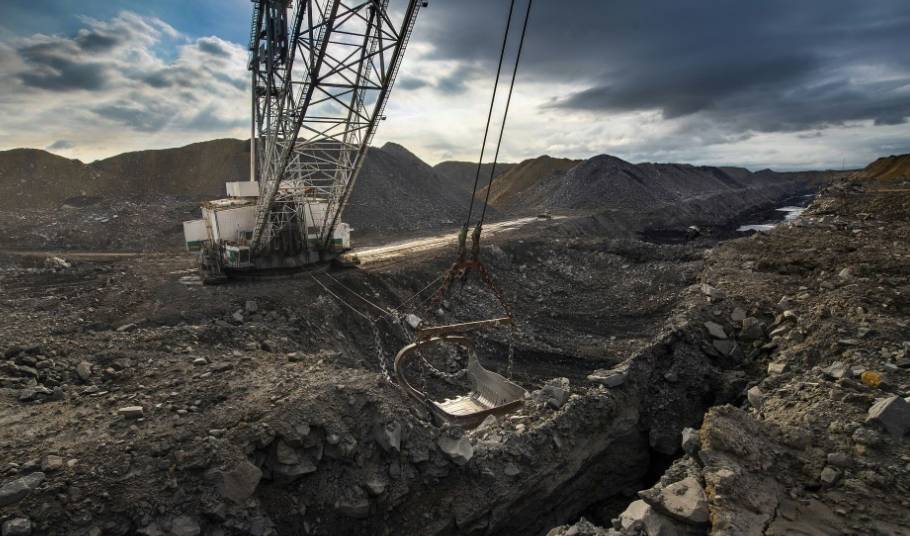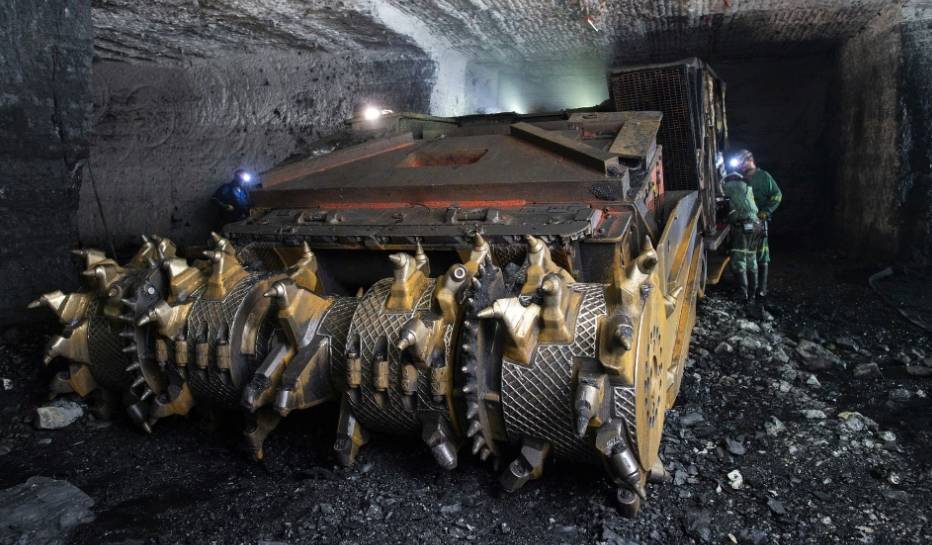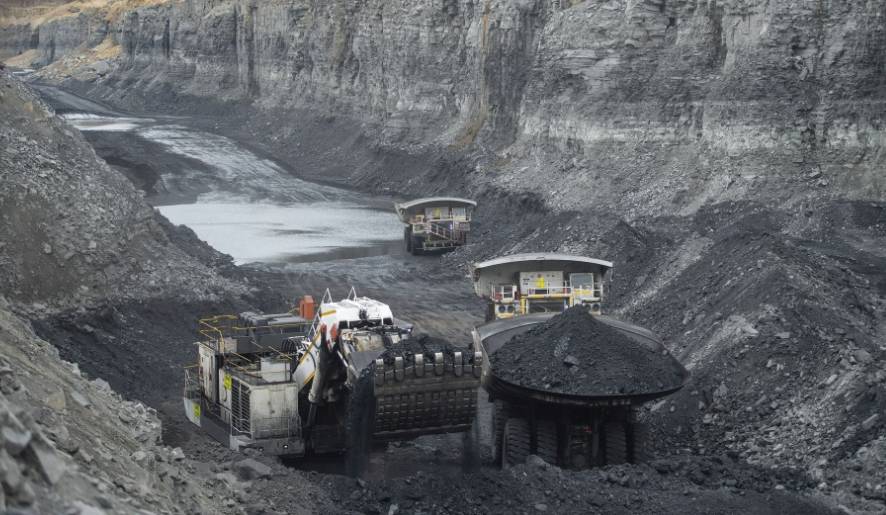Amid a surge in demand for the fossil fuel, several coal producers find themselves compelled to reserve tens of millions of dollars to mitigate their own risks. Insurers distancing themselves are causing business operations to become more challenging and expensive.
Numerous insurers have declared limitations on their insurance offerings within the coal sector, especially concerning new ventures. These actions stem from the influence of shareholders, governments, and environmental organizations, all aiming to curtail coal’s impact on global warming. This trend mirrors the decisions of banks that have also taken steps to curtail their financial support for coal-related endeavors.
Extensive insurance coverage is essential for coal miners, encompassing aspects like operations, property, equipment, and environmental liability. According to input from three insurance brokers, the process of securing such coverage for coal clients can now span months and involve numerous inquiries.
Five coal mining executives interviewed by Reuters revealed that the sector is progressively gravitating towards self-insurance and self-financing. This shift is attributed to the challenges of obtaining insurance coverage, which in turn escalates the cost of loans or renders them inaccessible.
Certain mining companies, such as South Africa’s Seriti Resources and Thungela Resources (TGAJ.J), are currently allocating funds for self-insurance. They opt to purchase insurance solely to safeguard against infrequent and substantial losses. Despite Seriti’s assertion of unhindered access to bank funding, the process of attaining insurance coverage has grown more demanding, as stated by the company’s Chief Financial Officer, Doug Gain.
“Given the acknowledgment of ESG considerations and other factors diminishing the worldwide availability of thermal coal insurance capacity, Seriti has initiated a path towards heightened self-insurance,” Gain communicated.
He refrained from providing further details regarding the expenses involved for Seriti, a significant supplier to numerous coal power stations in South Africa.
Numerous coal producers are devising alternative approaches, enabling production to maintain an upward trajectory. Anticipating a continuation of this trend, the International Energy Agency (IEA) projects that global supplies in 2023 will exceed the previous year’s peak of 8.6 billion tons. This projection follows the energy crisis spurred by the invasion of Ukraine, which compelled several nations to resort to coal for power generation.
However, the necessity to allocate funds for self-insurance restricts capital on the financial records of coal enterprises. This situation could potentially expose them to substantial expenses in the event of unforeseen issues, as pointed out by industry analysts.
According to insights from three analysts shared with Reuters, coal firms managed to absorb heightened expenses through their record profits from the previous year. However, during more challenging periods, the insurance-related challenges could pose greater difficulties as they contribute to elevated production costs.
“Insurance is an essential prerequisite for securing financing,” emphasized Ben Davis, an equity analyst at Liberum.
“Currently, for established producers, this doesn’t pose a significant problem as they can allocate resources, buoyed by ongoing coal prices. However, upcoming challenges could be more demanding for those who neglect to reserve funds,” he further remarked.
The diminishing availability of insurance coverage for coal producers has resulted in premiums surging by nearly threefold in comparison to an industry benchmark, as indicated by data sourced from brokerage firm Willis Towers Watson.
Rates for thermal coal insurance experienced an increase of over 20% in the past year, surpassing the 7.3% upturn observed in the benchmark Marsh Global Insurance Market Index. This information was reported by the company.
Over the past two years, Whitehaven Coal (WHC.AX), the leading independent coal miner in Australia, has encountered a near doubling of its insurance expenses, according to an individual familiar with the company, who requested anonymity due to the financial sensitivity of the information. Whitehaven declined to provide a statement on the matter.
Take Cover

Seriti employs a hybrid approach, incorporating self-insurance to address certain asset-related damages. Additionally, the company maintains a degree of coverage from the insurance sector, specifically for scenarios like flood damage or underground fire damage, as conveyed by a spokesperson.
In a bid to minimize insurance expenses, Seriti is augmenting the capital held within its internal insurance division. This strategic move aims to limit third-party insurance coverage solely to the excess layers of risk.
“Anticipatedly, the accessibility of insurance capacity for thermal coal assets is projected to diminish progressively, with capacity likely to be notably restricted by around 2030,” remarked Gain.
Regarding Thungela, a company that emerged as a separate entity from Anglo American, it allocated R1.2 billion ($67 million) in the past year for self-insuring a portion of its risks. Simultaneously, the company continues to obtain coverage for catastrophic risks, such as mine collapses or natural disasters, through the insurance market.
Thungela conveyed to Reuters its intention to transition to complete self-insurance in the future, without providing a specific timeframe.
Currently, forty-five insurance companies, including notable names like Allianz, Swiss Re, and Munich Re, have imposed limitations on coverage for the coal sector. This information comes from the environmental advocacy group Insure Our Future.
Certain insurers still maintain sizable operations within the fossil fuel sector. In 2022, the leading five companies by gross premiums were identified as Bermuda’s AEGIS, China’s PICC, Switzerland’s Chubb, and Germany’s Allianz, as per exclusive data furnished to Reuters by Insuramore, an entity specializing in insurance rankings and analysis.
AEGIS communicated via email that its coal-related operations constitute a minor segment of its overall portfolio and are in decline. On the other hand, Allianz stated its intention to gradually discontinue coal-related activities by the year 2040.
Chubb, which asserts that it refrains from insuring fresh risks for mining companies that derive over 30% of their revenue from coal, chose not to provide a comment. There was no response from China’s PICC when approached for comments.
Several coal producers have established independent entities, commonly referred to as captives, to manage their insurance needs. These captives are funded through a blend of the companies’ own resources, individual insurance providers, and a collaborative effort among multiple insurance firms to distribute risk through reinsurance.
Insurance companies can operate in both primary insurance and reinsurance sectors, with varying degrees of ESG commitments applicable to different aspects of their operations.
Insure Our Future coordinator Peter Bosshard noted:
“While a significant portion of the reinsurance market is still willing to engage with the existing activities of coal companies, new projects often face restrictions.”
Mutual Insurance Fund

Within Australia, coal enterprises have examined the possibility of establishing a mutual insurance fund, wherein all participants contribute as a means of self-insurance. However, discussions have encountered obstacles due to a lack of governmental backing, as indicated by individuals familiar with the situation.
“The creation of a mutual fund for the coal sector falls within the domain of the coal industry,” a representative from the Australian Department of Treasury stated.
They further added:
“Any form of financial assistance or assurance for such a mutual fund would require a governmental decision.”
The spokesperson did not disclose whether companies had initiated discussions with the government regarding the fund.
Nombasa Tsengwa, the CEO of South African coal miner Exxaro Resources (EXXJ.J), remarked that insurers in certain countries and regions, notably in Asia, displayed greater willingness to engage in business compared to other areas.
“We’ve also observed that there are jurisdictions keen on assuming the risks associated with coal enterprises,” Tsengwa commented, alluding to the stricter regulations prevalent in Europe.
“I’m referring to expanding beyond the usual UK-based markets and exploring sources of funding and insurance coverage in the Asian region,” she supplemented.
In September of the previous year, coal prices reached unprecedented levels, driven by the urgent efforts of European nations to substitute gas. This surge in demand propelled coal miners’ profits to new heights.
However, prices have since experienced a decline, and experts suggest that the necessity for producers to fulfill a greater portion of their financial and insurance prerequisites could worsen the effects of lower prices on their profits.
During the first half of the year, Thungela and Exxaro encountered declines of 75% and 29% in their profits, respectively, primarily attributed to softer prices. Leading diversified mining company Glencore (GLEN.L) reported a 51% reduction in profits from its industrial assets during the same period, mainly due to diminished prices, particularly in the coal sector, along with inflationary expenses.

